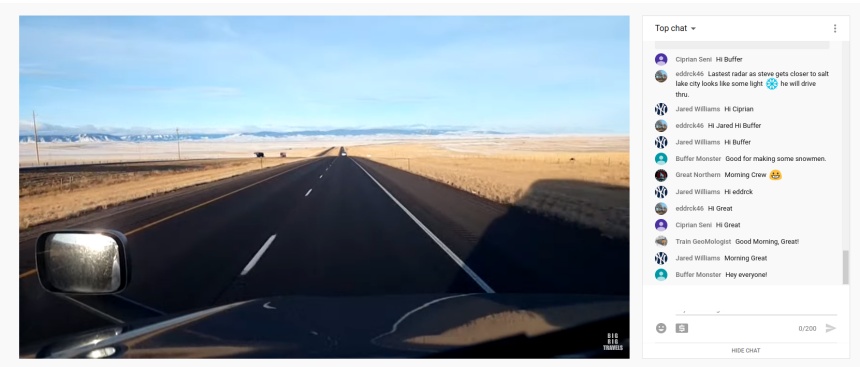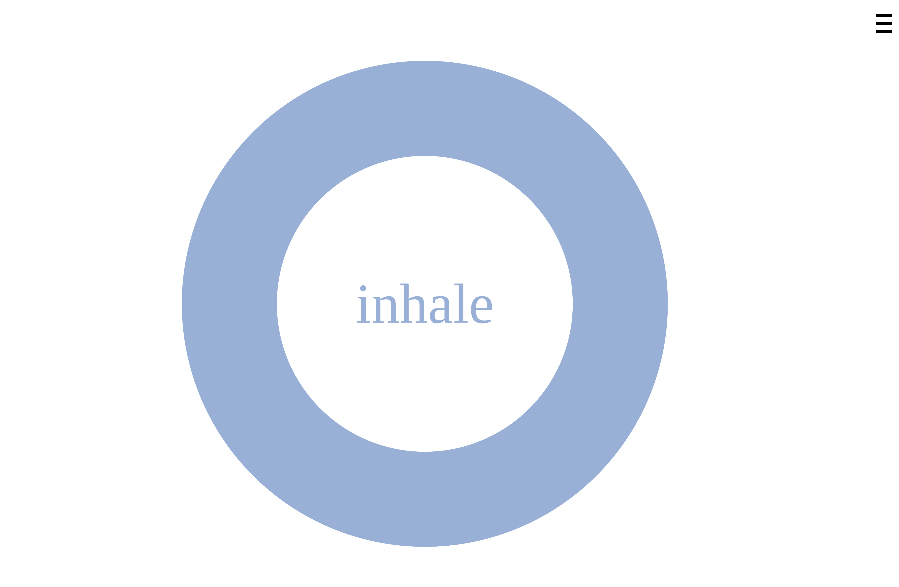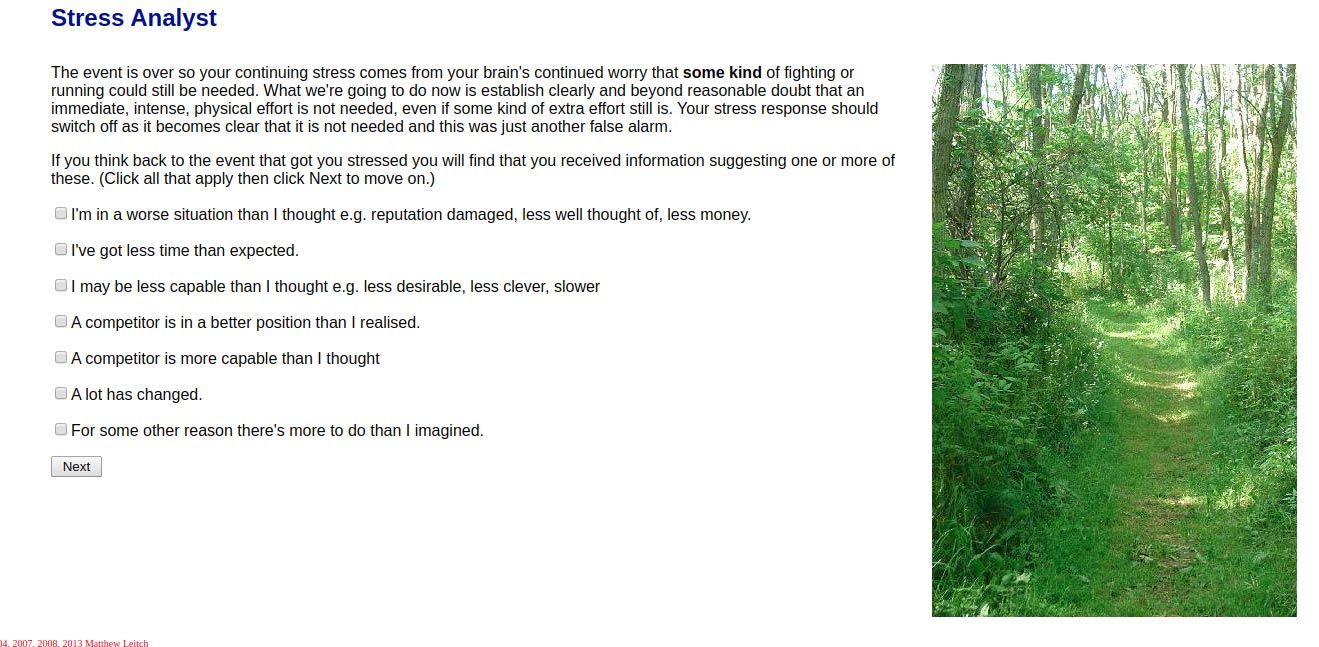No Sweat Tech: How Technology (Yes, Technology!) Can Help You De-Stress
Almost everybody is under a lot of stress these days, between politics, climate change, the wildfires in Australia, a new virus spreading around the world. So I’m going to look at ways you can calm down, rela— well, relaxing might be too much to ask for, but de-stress. There are sounds you can use, sights, and exercises. And if using these doesn’t help, I’ll give you a few places where you can talk to someone about how you’re feeling for free.
Soothe Your Ears
Usually when I work, I like it silent. But sometimes I find myself getting a little antsy or restless. I need some sound to settle me down. But I don’t try to find just the right music; instead, I look for some ambient noise. Via your speakers, you can recreate anything from a crackling campfire to a gentle rain to the Slytherin study room at Hogwarts. Here are three of my favorite noise generators.
Noises Online

At first glance Noises Online looks pretty complicated, but it’s really not. Each icon is a kind of sound. Hold your mouse pointer over it to see what kind of sound. If you click it, the sound comes on. If it click it multiple times, the sound quiets until it turns off completely. You can click multiple sounds to make a soundscape. For example, I made a nice audio collage of a crackling fire, ocean waves, and windchimes. There’s also a button to make a .WAV sound file of your selections so you can download it and take it with you. If you scroll down a little there are even more options for the tone and liveliness of your selection.
If you’re feeling intimidated, click on the “Pick of the Week” in the right corner to see how the site works. Summer Night features a chorus of frogs, a brook, and the gentle sounds of a warm evening.
Ambient Mixer

Ambient Mixer is less about individual sounds and more about making up a soundscape. The site has what must be thousands of different soundscapes for you to browse through via its category system, or search by keyword.
I did a search for campfire and got 743 results. After browsing for a while (the biggest problem with this site is that you can wander around in it for hours) I found “Rainy campfire while reading,” which was a nice mix of rain sounds, campfire, and someone drinking coffee. If you don’t like the mix available, you can adjust it with the mixer that’s built into the soundscape’s page.

I can imagine this site would be useful for all kinds of things. Writing and need a particular kind of atmosphere? Having a themed party? I bet you can find a relevant soundscape here.
Listen to the Clouds

This one is a little different, so bear with me. Listen to the Clouds is a web site that blends audio feeds from air traffic controllers with ambient music from SoundCloud. Pick an airport (they are arranged by location) and the site will load the audio. Sometimes airports are offline, and in a few places (like Germany, UK, and Spain) there are no feeds available at all. I like to choose airports that don’t use English, because otherwise it can be distracting. Once you find a feed that you like, you can select an ambient music piece underneath it, individually controlling the volume of each item.
Odd option for relaxation, isn’t it? But the soothing ambient music and the calm, usually flat delivery of the air traffic controllers provides an “everything’s okay” vibe which can help you relax and focus on your work. One note: I use ad and cookie blockers in my browser. They completely broke this site. If you have a lot of browser extensions installed, try using this site in an incognito window (in Chrome, this means your browser extensions don’t apply) first.
Easy on Your Eyes
Ever just wanted to watch TV and distract your mind? You don’t want people yelling or things blowing up, you just want to settle down, turn on the screen, and zone out. Or maybe you want something playing in the background for a little company. If that’s the case, check out slow TV.
Slow TV isn’t a particular program, it’s a type of programming; ordinary things, done at ordinary speed, in ordinary time. This might be a train ride, or a fire burning in a fireplace, or someone knitting. There’s a web site called Watching Grass Grow that’s just a live video feed of a lawn so you can watch grass grow.
When I want some slow TV, I find that searching YouTube for the words slow TV and either a place or a thing name works well. For a place name, countries work better than states, and cities don’t work well at all unless it’s a famous city. For things, you’ll have to experiment a little. Slow TV landscape and Slow TV space will find you interesting videos, but I can’t help you if you insist on searching for Slow TV spaghetti.
What kind of things do you find? Searching for Slow TV Japan found me train rides, walks around cities at night, and similar calming things. Searching for Slow TV Georgia led me to discover BigRigTravels, a YouTube channel apparently set up by a long-haul trucker who livestreams his drives.

Of course, you’re not supposed to pay close attention to slow TV. You can watch for a while, get distracted, close your eyes, think about something else, maybe even take a little nap. And that’s the whole point.
Calming Exercises
Up until now we’ve looked at things you can do passively to relax — sounds and videos you can take in. But there are deliberate exercises you can do as well to help you maintain equilibrium.
Breathe Slowly
Isn’t it weird? Breathing is our core necessary function. If we don’t breathe, we die. And yet it’s so easy to forget to take deep, full breaths. If you get stressed you might find yourself taking shallow breaths or even holding your breath as if you’re bracing yourself. Breathe Slowly is an animated circle that grows larger and smaller as it reminds you to inhale and exhale.

After a few minutes of breathing along with the circle, you might find your shoulders settling down a little. If you find the circle goes too fast or too slow, click on the menu in the upper right corner to adjust the speed.
Stress Analyst
I suspect this site is one of those you’re either going to love or hate. So if you visit this site and find yourself going “ugh!” that’s okay. Skip it. Stress Analyst is a site that walks you through the anxiety and stress that you’re feeling. You’re asked to answer questions about how you’re feeling and strategies you could use to de-stress. As you’re answering questions, the site periodically asks you about your stress level.

You might find this approach validating and reassuring. Or you might find it annoying and perhaps patronizing. Personally when I’m feeling really stressed, I like a third party kind of taking me through all the facts I tend to forget (that stress is a physical reaction, you can take steps to counteract it, etc.). It’s a quick process and could be useful when you just want to check in with your own feelings.
Pixel Thoughts
Pixel Thoughts is a 60-second exercise designed to help you get over anxious repetitive thoughts. You’re asked to put your thought in a star, and then the star floats away as you’re reminded of the vastness of the universe and how incredibly tiny your thought is compared to it. Then the star vanishes into the star field.

(This is kind of an off-label use, but this site can also help you when you’re feeling really angry and don’t have an outlet. It’s cathartic to fill the star with swear words and then watch it float away.)
When You Need Help
Sometimes gentle music or slow TV can’t help you. You might be panicky, with racing thoughts, and you can’t seem to steady yourself. If you think you’re in immediate danger, please call 911 and talk to humans who can help you immediately.
But if it’s not that much of an emergency, then there are some ways you can talk (or chat, or text) someone who can point you to helpful resources, or just listen. (Isn’t it amazing how often we can feel better if someone just listens to us for a little while?)
Suicide Prevention Lifeline
Put down the mouse and pick up the phone. The front page of Suicide Prevention Lifeline has an 800 number you can call immediately. The crisis worker you can reach will listen to you and can connect you to resources to help. You don’t have to be suicidal to call this number; maybe you’re depressed, or worried, or you’re really lonely. This number will get you to someone who will listen, and who cares about you. The site also has resources for specific kinds of struggles and concerns.
(What did I hear? Did I hear someone say that their problems aren’t important enough to call this number? You stop that right now! We are not having a problem comparison contest. Or if we are, then I’m the judge and I say your problems are important enough and you are important enough. Pick up the phone.)
Crisis Text Line
Sometimes when you’re really upset, you don’t want to talk on the phone. Or maybe you don’t like talking on the phone anyway. Crisis Text Line provides numbers for people in the US, UK, and Canada to text and talk to someone. The site describes its mission as helping people “move from a hot moment to a cool moment,” which is a great way to put it. Like the Suicide Prevention Lifeline, this resource is not just for those with suicidal thoughts but, as the site says, “it’s any painful emotion for which you need support.” It’s available 24 hours a day.
IMALIVE
Don’t want to call, don’t want to text? Maybe you want to chat. IMALIVE has a crisis chat available 24 hours a day if you’re feeling stressed and need to talk to someone. In addition, IMALIVE does “mental health fairs” at college campuses around the country. The site’s blog has stories of other people sharing their experiences with stress and anxiety. Knowing you’re not alone may help.
“All times are hard times sometimes,” as my Granny says. It’s only human to have times when you feel anxious and unbalanced. There are lots of resources online that can help you, and if those aren’t enough, there are people who can help you too. I wish you the best, happiest, healthiest, most love-filled year you can possibly imagine.
Featured image: Screenshot from Breathe Slowly (https://xhalr.com/)